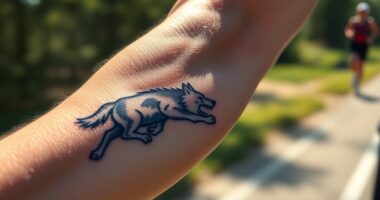As you expand your safe distance from 5 km to 100 km, you’ll notice how risk zones gradually shift and grow, with closer areas posing higher dangers. You can map this progression by recognizing visual cues and understanding how risk decreases with distance, helping you stay within safe zones. Mastering this scale improves your spatial awareness and decision-making. Keep exploring, and you’ll discover more ways to navigate these distances confidently.
Key Takeaways
- Safe distance progression starts at close contact (0-5K) zones, where transmission risk is highest, and extends outward as risk diminishes.
- Visual cues, such as arm span and object size, help estimate distances between 5K and 100K for accurate zone mapping.
- Understanding personal space variations aids in adapting safe zones from 5K to 100K environments for better risk management.
- Accurate distance estimation skills are essential for navigating from near-contact to far-distance zones safely.
- Mapping the gradual transition from high to low-risk zones enhances confidence and decision-making in diverse settings.
Mapping the Progression of Safe Distances

Understanding how safe distance progresses is essential for maintaining health and safety in various settings. As you navigate environments where proximity matters, you’ll need to develop keen skills in distance estimation to accurately judge how close you are to others. Proper distance estimation helps you stay within safe zones, reducing the risk of infection, accidents, or conflicts. These risk zones aren’t arbitrary; they are carefully mapped based on the level of danger associated with different proximities. Knowing where these zones begin and end allows you to make quick, confident decisions about your positioning relative to others.
When you start in a crowded space, such as a busy street or a packed event, your goal is to identify the initial risk zone—usually the closest proximity where contact or transmission is most likely. This zone might extend just a few feet around a person, often corresponding to the recommended safe distance for health safety, such as six feet or two meters. As you move farther away, you enter zones of decreasing risk, where the likelihood of transmission or collision diminishes. Recognizing these zones depends on your ability to estimate distances accurately, which improves with practice. For example, you might use visual cues like the span of your arm or the size of nearby objects to gauge how far away someone is.
Furthermore, understanding personal space and its variations helps you better gauge these safe zones and adapt your behavior accordingly. As distances increase, the risk zones expand outward, but the danger lessens. You’ll find that understanding this progression helps you maintain appropriate spacing without constantly measuring or second-guessing yourself. Developing an intuitive sense of safe distances can significantly enhance your situational awareness, especially in dynamic environments. You’ll start to develop an intuitive sense of where danger begins and how it tapers off, enabling you to adapt your behavior quickly. This is especially indispensable in settings like workplaces, public transportation, or social gatherings where maintaining safe distances can prevent the spread of illness or avoid conflicts.
In environments where space is limited, you might need to be more precise with your distance estimation to stay within the safe zones. Conversely, in open areas, you can afford to be more relaxed, but understanding the progression of safe distances still guides your actions. As you map this progression from close contact to more distant zones, you’ll gain confidence in your ability to navigate different scenarios effectively. Recognizing how each zone relates to the next simplifies decision-making, allowing you to prioritize safety without overthinking every step. Ultimately, mastering the understanding of how safe distance progresses empowers you to protect yourself and those around you more effectively, ensuring health and safety remain at the forefront of your interactions.
Frequently Asked Questions
How Are Safe Distances Determined Across Different Environments?
You determine safe distances by conducting a risk assessment that considers environmental factors like terrain, weather, and obstacles. You evaluate how these elements influence safety, adjusting distances accordingly. By analyzing potential hazards and their impact on exposure, you set guidelines that protect individuals or equipment. This process guarantees safety protocols are tailored to specific environments, helping you minimize risks effectively across different settings.
What Factors Influence the Change in Safe Distance Thresholds?
You should consider that safe distance thresholds change because of behavioral adaptation and environmental factors. As situations evolve, your behavior adjusts to maintain safety, influenced by factors like crowd density, visibility, and terrain. These environmental factors impact how close you can get without risking safety. Staying aware of these influences helps you adapt your distance appropriately, ensuring you remain safe across different settings and conditions.
Are There Technological Tools to Monitor Safe Distances in Real-Time?
Your safety depends on cutting-edge technology that’s changing the game. Real-time distance measurement tools, like laser sensors and ultrasonic devices, help you maintain safe distances instantly. Safety technology now offers live monitoring, alerting you when you’re too close. This innovation turns overwhelming situations into manageable ones, making it easier to stay safe and confident. You can trust these tools to keep you informed and secure at all times.
How Do Safety Standards Vary Internationally for Distance Guidelines?
You should know that safety standards for distance guidelines vary internationally due to cultural differences and legal regulations. Some countries prioritize personal space more, setting stricter distances, while others are more relaxed. You’ll find that legal frameworks influence these standards, ensuring consistency within regions. It’s important to stay informed about local regulations and cultural norms, especially when working or traveling abroad, to maintain safe and respectful interactions.
What Are the Risks of Exceeding Recommended Safe Distances?
Exceeding recommended safe distances can compromise your personal space and social distancing efforts, increasing your risk of exposure to illnesses. When you ignore these guidelines, you might unintentionally come into close contact with others, raising the chance of transmission. Maintaining proper distances helps protect your health and respects others’ personal space, reducing anxiety and promoting safer social interactions in various settings. Always stay within recommended limits to stay safe.
Conclusion
As you progress from 5k to 100k, remember that safety distances grow exponentially—by over 1,900% in this journey. That means what’s safe at 5k isn’t enough at higher distances. Keep this in mind as you plan your routes, and stay vigilant. This staggering statistic shows how critical it is to adapt your approach; otherwise, you risk falling behind. Stay informed, stay safe, and keep pushing forward wisely.









